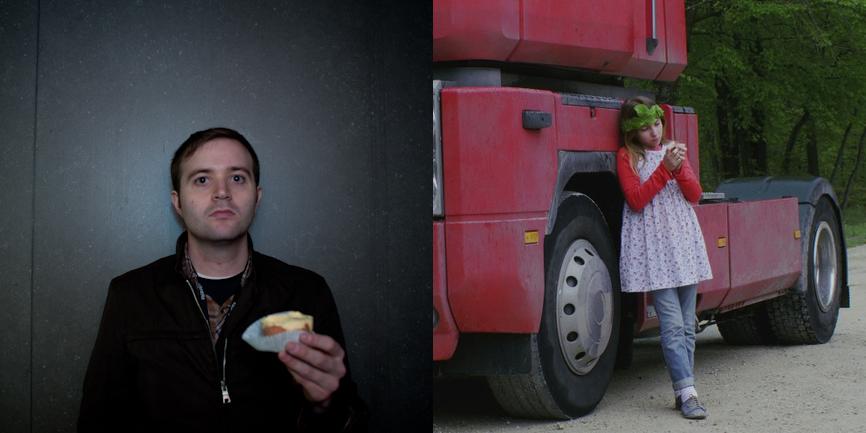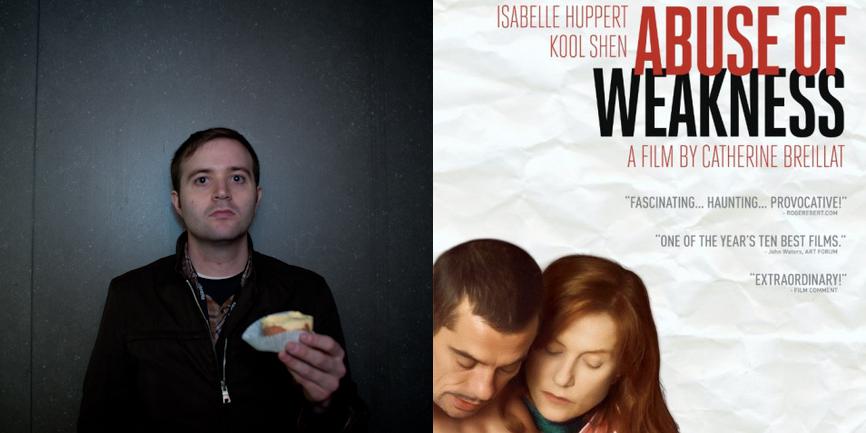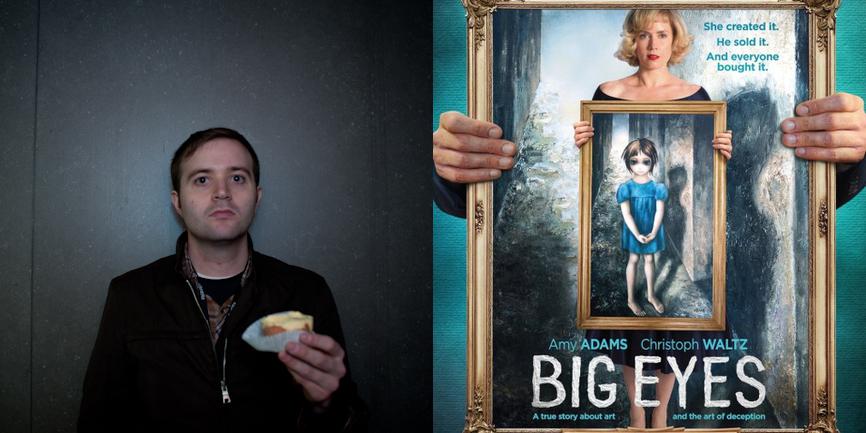Ah, the cinema. Mise-en-scène! Every composition like a little snowflake — maybe similar to others from a distance, but on closer inspection, each and every one reveals its own nuances that make it wholly unique. Or, you know, maybe not.
My Name is Hmmm…, the directorial debut of fashion designer agnès b. (crediting herself here as Agnès Troublé, which, amazingly, is her birth name) tells a fairly direct story. It’s about an eleven-year-old girl (Lou-Lélia Demerliac) who, while on a school field trip to the seaside, escapes and stows away with a middle-aged truck driver (Scottish artist and filmmaker Douglas Gordon). She’s been raped by her father, and the trucker has some emotional things he’s going through, too, and together they experience some kind of escape. It ends badly, and ambiguously, as most things from Europe tend to do. Aesthetically, however, b. not only breaks from what you’d expect from a fashion-designer-turned-filmmaker, but intentionally goes against any and all recent trends in art-house filmmaking. She strives for spontaneity by way of deliberate amateurism. The frames are constantly re-adjusted without motivation. The edits are sloppy, jump cuts abound, and it’s not uncommon for characters suddenly to disappear from frames without reason. In her most confrontational aesthetic subversion, she bootlegs her own movie, randomly cutting to cell phone footage of the same exact scene shot off a screen, from below, at a terrible angle. It’s new, give it that! Far beyond its narrative content, and even outside my respect for its messy anti-formalism, My Name is Hmmm… put me in a headspace to reflect on the limitations of narrative cinematic storytelling.
After seeing Rodney Ascher’s Room 237 in 2013, I was pretty excited to catch The Shining Backwards and Forwards at the Spectacle Theater in Williamsburg. Ascher’s doc is one of the all-time great movies about movies, and going down its very specific rabbit hole made me feel like the possibilities of art were endless. If you haven’t seen it, The Shining Backwards and Forwards is exactly what it sounds like, Stanley Kubrick’s horror masterpiece projected on top of itself in reverse. Pitched in the doc as a brain-melting maze of moments too good to be coincidences, I found the actual experience of watching it to be kind of depressing. Of course things are lining up, of course Jack’s head is perfectly framed around Danny’s, of course the two shots create their own frames around seemingly disparate moments, because there are only so many ways you can shoot a movie, and as many rules as Kubrick is revered for breaking, he obeyed just as many, too. I walked out halfway through. I couldn’t take it. Film grammar felt like a prison.
It doesn’t help that there’s a frustrating same-ness to a lot of modern filmmaking, and the Euro/art house/festival circuit is no exception. In a few recent conversations, I’ve lamented that the Dardennes have kinda ruined foreign and independent movies for the past couple decades. Hey, sure, I’ve only seen three or four of their movies and they’ve ranged from absolutely great to not that bad. But look, what they do isn’t easy. It’s tough to take storylines that simple and shoot with them with a handheld camera and non-actors and make it engaging. They’re doing something bigger, something deeper, and while I know absolutely nothing about their working methods, I can say with confidence that it involves more than just casting non-actors and shooting with a handheld camera. But that’s clearly lost on lots of people, since at the end of every year I always try and catch up on the movies I missed in theaters but that critics and friends seemed to like, and I invariably end up watching so many movies with simple stories shot with a handheld camera using non-actors.
Likewise, it’s just as easy to go for the complete opposite of this affected “naturalism.” As easy as it is to shoot some over-the-shoulder handheld shots, it’s just as easy to put a tripod in the corner of a room and roll for 10 minutes. If you can keep your camera static and far away enough and hold your shot forever, you can really clean house on the festival circuit. One of the most popular of these kind of movies from a couple years ago was literally just interminably long takes shot by GoPros strapped to different places on a boat. At some point in Sátántangó, I tune out, and that point is pretty early on. Not that form can’t be content, but it gets passed off as such way too often.
OK, gosh, sorry. This hasn’t really been about My Name is Hmmm… that much, despite what the really big font at the top of this page might say. The majority of critics don’t really like b.’s film, but based on what I can gather from the movie, I don’t think she gives a fuck. She’s not trying to recreate the techniques of the French New Wave, as some have accused her of doing, but attempting to deconstruct the very idea of technique. It’s a “fuck you,” and in my book “fuck you”s are always needed, even if they aren’t entirely successful. Even snowflakes can get boring after a while. There may be a finite number of ways to make a movie, and we might have already discovered all of them, but kudos to any artist who tries to do both, whatever their motivations may be.






